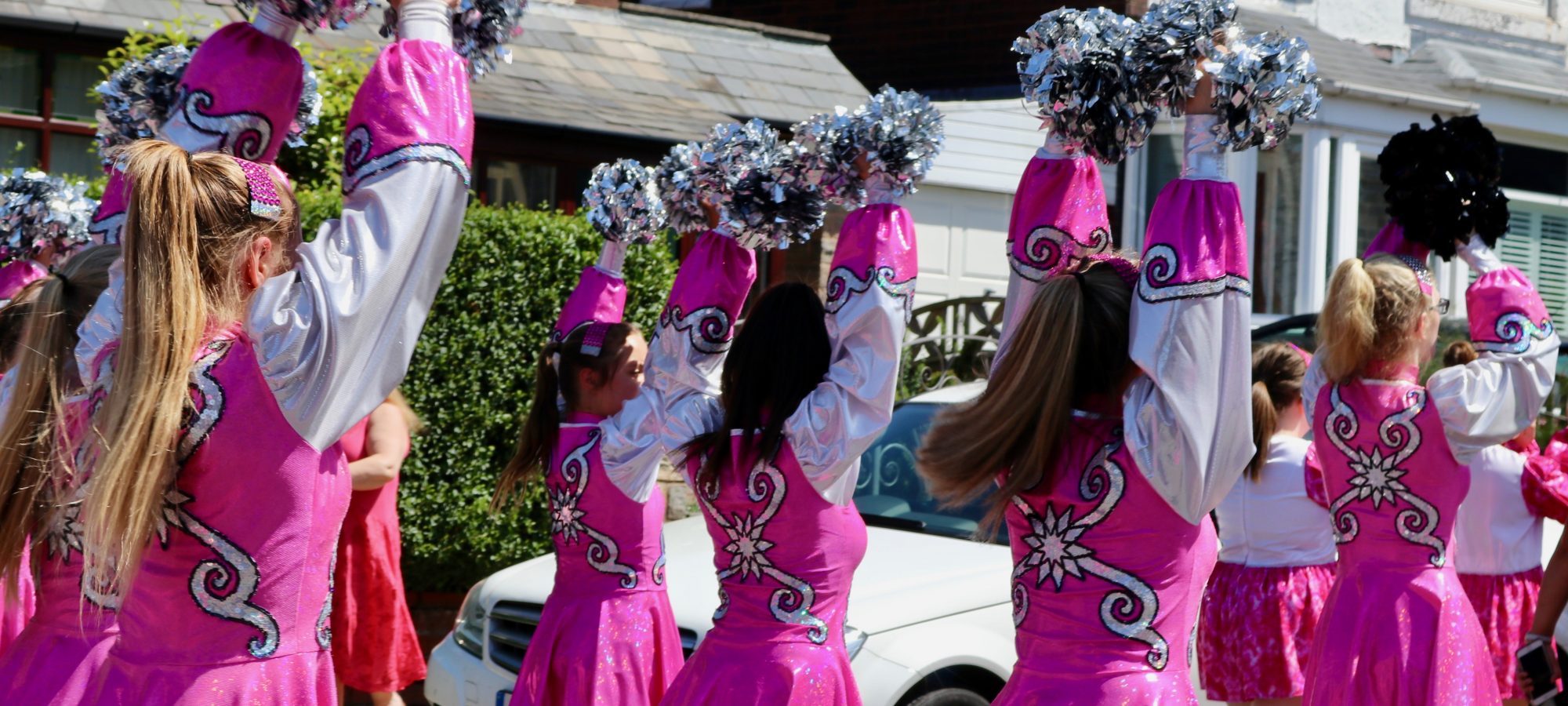If you think you know Morris dancing, think again!
Girls’ carnival Morris dancing—sometimes known as ‘fluffy’ Morris—is a highly competitive team dance unique to the Northwest of England, and is performed throughout the Tameside and Mossley area. Known for its intricate stepping, pounding music and glittering costumes, it is sometimes likened to cheerleading, but girls’ Morris is much older—potentially even its original precursor! Although the performance has strong historical links to other forms of ‘traditional’ Morris dancing, it was rejected by the folk revival movement for decades on the grounds that its female participants and strong associations with industrial working class communities were not sufficiently ‘authentic’. Instead, the dancers identify more closely with the town carnival movement of the nineteenth and early-twentieth centuries and the popular street parades that were the primary context for girls’ Morris competitions until the early 1990s. Today girls Morris dancing is mostly performed in sports halls and community centres, but remains highly popular with girls and young women aged 18 months up, with a strong and active community of dancers, costume-makers and supporters around it. Girls’ Morris is a crucial piece of the puzzle in understanding both our UK carnival heritage and the overlooked role of women as performers and tradition-bearers.
Lucy Wright is an artist and researcher who has spent around 8 years recording the stories of some of the many women who have been involved in girls’ Morris dancing, past and present, using photography, performance and oral history to help make this vibrant aspect of our shared cultural heritage more visible. You can find out more about her work so far, at:
www.artistic-researcher.co.uk.
We thank Lucy for the content above and her generous sharing of her research.
To read more about Cotton Culture, our Heritage Lottery Funded Project, head to our Heritage page

